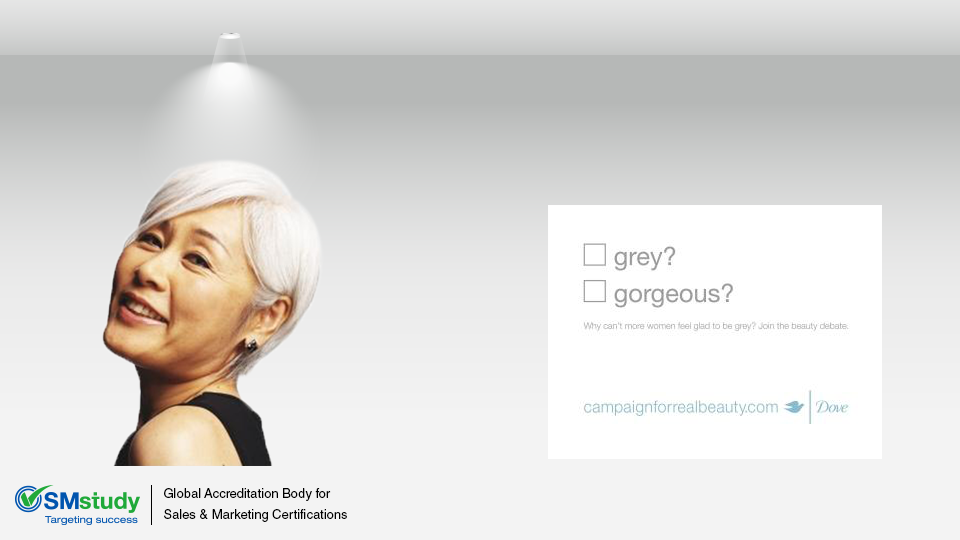In 2004, the Dove brand released the Real Beauty Campaign to spark discussion about beauty. The ad might have seemed unconventional to some, but the controversial questions sure made people reevaluate their own opinion of what beautiful is. The ad asked the public whether the women presented in photos were “Oversized or Outstanding” and “Wrinkled or Wonderful?” Viewers were asked to then vote at RealBeautyCampaign.com.
This is an example of a positioning statement. According to Marketing Strategy, book 1 in the SMstudy Guide®, the positioning statement is the main output of the Create Differentiated Positioning process. It is generally a short sentence or phrase that captures the essence of the value a company’s products offers to its target customers. The positioning statement should create an image of the products, highlighting the most important benefits that differentiate them from the competitor products and that offer the most value. It should be specific enough that it covers any key benefits to target customers, yet broad enough that it stays relevant for product variants and for future market scenarios.”
The conversation did not stop there. In 2005, Dove kicked off the second and most iconic phase of its campaign by featuring six truly beautiful women—curves and all—to emphasize that you do not have to be thin to be beautiful. Women come in all shapes and sizes. Shortly thereafter, Spain banned overly thin models in the world of fashion.
In response, Dove launched a series of commercials artificially transforming real women into models. The commercials showed the digital process of developing an ad campaign. A “real” woman was transformed through hair and makeup before a photo shoot. Viewers then entered the world of Photoshop, where the woman’s neck was elongated, eyebrows were lifted and cheekbones were emphasized. How real is that?
Over the past decade, the campaign has evolved into much more. As the Real Beauty campaign points out, females are bombarded with an unrealistic and unattainable depiction of beauty, so Dove set out to change the minds of little girls around the world. The Self-Esteem Foundation was created by the Dove brand to inspire and educate young girls affected by low self-esteem, which can affect a child into her adult years and cause her to fall short in reaching her potential.
Dove not only marketed its brand but also widened the scope of what is considered beautiful.
For more interesting articles about Sales and Marketing, visit - www.SMstudy.com/articles
[Stephanie Vezilj, SMstudy staff writer, contributed to this article]

